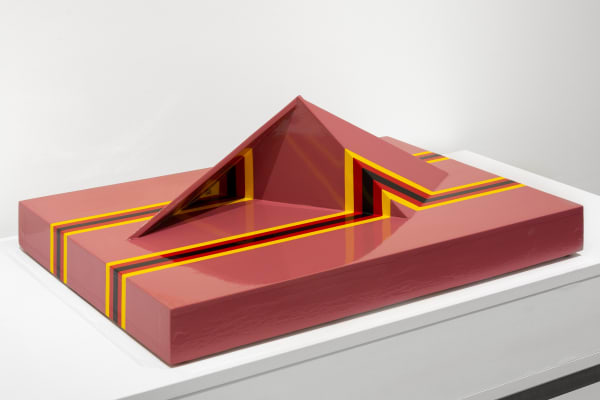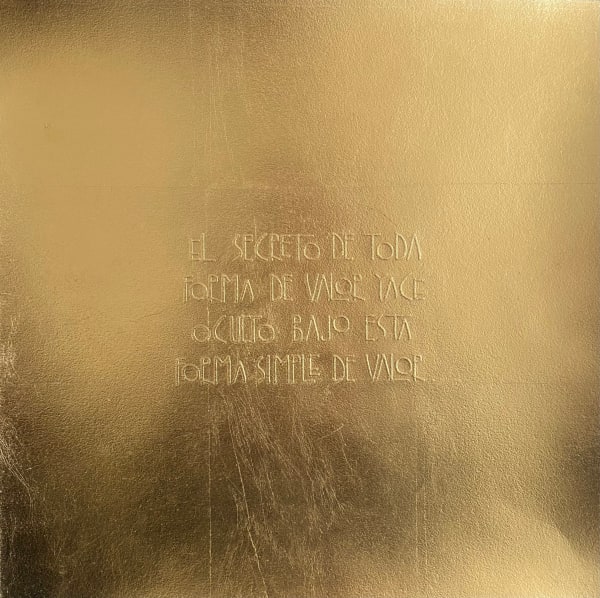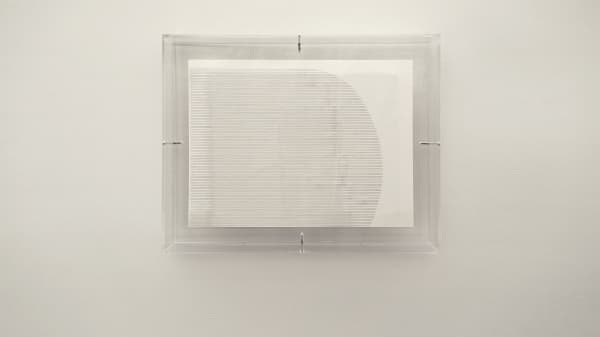-
I AM NOT YOUR MEXICAN
NEW YORK CITY, MAY 24 - SEPTEMBER 8, 2023 -
Ruiz-Healy Art is pleased to present I Am Not Your Mexican, two concurrent group exhibitions, at our San Antonio and New York City galleries.The exhibitions are curated by writer Eduardo Egea and feature artists Jesse Amado, Mathias Goeritz, Hersúa, Willy Kautz-Jippies Asquerosos, Fernando Polidura, and Teresa Serrano. The exhibitions will include historical works by Goeritz, Hersúa, and Serrano.
-
Exhibition curator, Eduardo Egea notes, “Western Art built an artistic canon that influenced the rest of the world. Minimalism is one of the Post-War movements whose influence continues; within this movement the artist Eva Hesse created a Post-Minimalism practice that laid the foundation for its expansion. But how have artists from other latitudes dealt with the overwhelming dominance of Western contemporary art? Assimilating and transforming these influences, México has been, for decades, a rich laboratory to subvert Minimalism through Post-Minimalist practices that seek to give meaning to the timeless but rigid Minimalist geometric forms of which this exhibition gives an account.”
-
 Jesse AmadoTake Out Brisquet Burger, 2023Virgin wool felt and acrylic on styrofoam24 x 24 x 4 in
Jesse AmadoTake Out Brisquet Burger, 2023Virgin wool felt and acrylic on styrofoam24 x 24 x 4 in
61 x 61 x 10.2 cm -
 Jesse AmadoI Am Not Your Mexican, A Rapist, 2023100% virgin wool felt, acrylic on chicharrón, silver chain30.5 x 30.5 x 4 in
Jesse AmadoI Am Not Your Mexican, A Rapist, 2023100% virgin wool felt, acrylic on chicharrón, silver chain30.5 x 30.5 x 4 in
77.5 x 77.5 x 10.2 cmThe exhibitions are titled after San Antonio based artist Jesse Amado’s series I Am Not Your Mexican, a title inspired by the writings of James Baldwin and the documentary film I Am Not Your Negro (2016). The film offers a history of the systematic marginalization of Black American historical figures and events through their misrepresentation (or under-representation) in mainstream historical narratives. The title’s reference serves as an entry point to understand art that may at first appear to be highly conceptual or purely abstract. Instead, the I Am Not Your Mexican series compels us to reconsider the art historical canon for the twenty-first century. The series is particularly important for its innovative use of chicharrón (pork rind) or Styrofoam fast food containers, products with both cultural and social-economic commentary.
-
 Mathias GoeritzMensaje, 1982Mixografía® print on handmade paper, gold leaf25 x 15 in
Mathias GoeritzMensaje, 1982Mixografía® print on handmade paper, gold leaf25 x 15 in
63.5 x 38.1 cmEdition of 50 plus 5 artist's proofs -
 Mathias GoeritzMensaje, 1958-62Hammered brass and metal fasteners on board24 x 36 3/4 x 1/2 in
Mathias GoeritzMensaje, 1958-62Hammered brass and metal fasteners on board24 x 36 3/4 x 1/2 in
61 x 93.5 x 1.3 cmOther works in the exhibition feature the enduring influence of Post-Minimalism in Mexican and Mexican-American artists' works and show how these artists have expanded Post-Minimalism tenets. Using gilded metal Mathias Goeritz endows cryptic Minimalist geometric shapes with spiritual meaning in works like Mensaje forging geometry to a signification.
-
 HersúaUntitled, 1967Acrylic on colored cardboard and straws19.5 x 15.75 x 2 in
HersúaUntitled, 1967Acrylic on colored cardboard and straws19.5 x 15.75 x 2 in
49.5 x 40 x 5.1 cm -
Based on the interaction between the spectator and the work that Mathias Goeritz developed in the monumental public art work "Torres de Satélite," 1957-58, Hersúa implemented a very original interaction between the spectator, geometry, perception of space and color in monumental sculptures such as "Ambiente Circular" and "Ambiente Rectangular" both from 1973, and of which Ruiz-Healy Art exhibits the original models, works that echo the “theatricality” of Minimalism, whose literalness broke the line between reality and art, a criticism raised by Michael Fried in his seminal essay, "Art and Objecthood," 1967
-
 Willy Kautz - Jippies AsquerososNoli Me Tangere, 2020Gold leaf on MDF27.5 x 48 x 2 in
Willy Kautz - Jippies AsquerososNoli Me Tangere, 2020Gold leaf on MDF27.5 x 48 x 2 in
70 x 122 x 5.1 cm -
-
JIPPIES ASQUEROSOS EXPANDS ON GOLD'S SPIRITUAL AND MATERIALISTIC IMPLICATIONS IN HIS WORK, NOLI ME TANGERE."A WELL-KNOWN BIBLICAL THEME FROM THE GOSPEL OF SAINT JOHN, IN WHICH HE NARRATES HOW, AFTER THE RESURRECTION OF CHRIST, MARY MAGDALENE RECOGNIZES HIM AND TRIES TO TOUCH HIM. CHRIST ANSWERS HIM: NOLI ME TANGERE (DON’T TOUCH ME). IT IS A CLASSICAL THEME WIDELY REPRESENTED IN THE HISTORY OF ART. I DECIDED TO DO IT IN GOLD TO EXALT THE VALUE ATTRIBUTED TO THE WORK OF ART, A SACRED OBJECT THAT CANNOT BE TOUCHED."
- WILLY KAUTZ - JIPPIES ASQUEROSOS
-
 Fernando PoliduraThirty-second Adjustment, 2023Vinyl paint, paper, shrink wrap film13.9 x 20.3 x 1.4 in
Fernando PoliduraThirty-second Adjustment, 2023Vinyl paint, paper, shrink wrap film13.9 x 20.3 x 1.4 in
35.3 x 51.3 x 3.5 cm -
THE SERPENT’S CAUSEWAy
"Physical development is kind of incremental quota that is initially met with joy until reaching the turning point towards middle adulthood and eventually senescence. First smooth, sumptuous, and moisturized, then folded, dry, and dehydrated, the pieces simulate the maturation of human flesh from birth to old age in a sort of acceleration of events."
- Fernando polidura
-
CONSTANZA AND FABRIANO
This series emerged as an imperative action in response to the daily life into which the artist was suddenly immersed during the confinement due to the SARS-COV-2 pandemic. In response to this situation, he developed an equally severe and rigorous exercise in which he embroiders human hair on cotton paper, raw materials provided by the immediacy of his environment. The resulting meticulous works arise from the need to generate a placebo that counters the anxiety and constant desire for control caused by obsessive-compulsive disorder, a particular condition that undermines the artist's integrity and, consequently, that of the work. -
 Teresa SerranoWomb, 1994Iron, mirror, and ceramic36 x 20 x 19 in
Teresa SerranoWomb, 1994Iron, mirror, and ceramic36 x 20 x 19 in
91.4 x 50.8 x 48.3 cm -
Anne C. Chave, in the important critical essay on Minimalism: Minimalism and the Rhetoric of Power, 1990, discusses the industrial, corporate, military, and therefore patriarchial and macho character of Minimalism with respect to its scale, its potential for mass production, compliance with government regulations, etc. Right at the same time that this essay was published, Serrano produced sculptures in which she subverted the depersonalized coldness of materials such as steel, iron, or other metals common to Minimalism; but confronted these with the feminine seduction of lace, ceramics and mirrors.
I Am Not Your Mexican: New York City
Past viewing_room

















